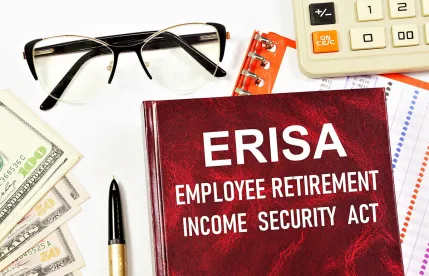According to a recent survey, about 45% of companies do not have a Chief Information Security Officer (CISO). As West Monroe’s “The Importance of a CISO” observes, it would be terrific for all organizations to have a CISO, but that simply may not be practical for some, particularly smaller organizations. Recent internal audit guidance issued by the federal Department of Labor (DOL), however, directs its investigators to verify the designation of a CISO when auditing retirement plans.
Nearly a year ago, on April 14, the DOL issued cyber security guidance for retirement plans (Guidance). Shortly thereafter, the Department began to weave its newly-minted cybersecurity guidance into plan audits. Basically, the Guidance has three prongs:
-
Cybersecurity best practices for the plan and their service providers
-
Exercise of prudence as an ERISA fiduciary when selecting service providers with respect to cybersecurity practices
-
Educating plan participants and beneficiaries on basic rules to reduce risk of fraud or loss to their retirement plan accounts
The DOL offers 12 helpful “best practices” for any cybersecurity program. Number four on its list provides:
-
Clearly Defined and Assigned Information Security Roles and Responsibilities. For a cybersecurity program to be effective, it must be managed at the senior executive level and executed by qualified personnel. As a senior executive, the Chief Information Security Officer (CISO) would generally establish and maintain the vision, strategy, and operation of the cybersecurity program which is performed by qualified personnel who should meet the following criteria:
-
-
Sufficient experience and necessary certifications.
-
Initial and periodic background checks.
-
Regular updates and training to address current cybersecurity risks.
-
Current knowledge of changing cybersecurity threats and countermeasures
-
Currently, DOL personnel who conduct retirement plan audits are likely to be very familiar with the full range of ERISA requirements for retirement plans. Until recently, however, the DOL had not made clear that cybersecurity was one of those requirements. In an effort to assist its investigators when auditing such plans, the agency provided an investigative guide that closely tracks the Guidance, and offers investigators suggestions for practices to look for during the cybersecurity audit. With regard to number four above, the investigative guide urges investigators to:
Look for:
Evidence verifying the designation of a senior leader as the Chief Information Security Officer (CISO) and demonstrating the CISO’s qualifications and accountability for the management, implementation, and evaluation of the cybersecurity program.
As DOL investigators grapple with applying the Guidance along with their internal resources, it remains unclear whether they will be fixated on requiring in all cases an express designation of a “CISO” by all retirement plan sponsors and plan service providers. Of course, it will be important for organizations to clearly define and assign information security roles and responsibilities to avoid. The lack of a “CISO” designation alone should not necessarily mean an organization’s data security efforts are rudderless.
Persons in positions such as Director of IT, Chief Information Officer, or IT manager, all may help to support the organization’s efforts to maintain the privacy and security of plan data. But their roles and expertise may not be sufficient to fully address data security for the organization, the plan, or its service providers. For instance, persons in these positions may be appropriately focused on the organization’s IT systems and equipment for which security is only one issue. While these roles are important as well, the focus should be to make sure there is qualified senior leadership with information security roles and responsibilities. The West Monroe article above identifies nicely the attributes such senior leadership might have to fill this need:
-
Executive Presence: The [leader] should have the executive presence to effectively represent the organization’s position regarding information security and the ability to influence executives. They need to be able to identify and assess threats, and then translate the risks into language executives can understand
-
Business Knowledge: The [leader] needs to understand business operations and the critical data that organization is trying to protect. She needs to view business operations from a risk versus security perspective and implement controls to minimize risks and business disruptions.
-
Security Knowledge: A [leader] must be capable of understanding complex security configurations and reports from the technical perspective, and then be capable of translating the relevant technical details into language that other executives can understand.
This raises an important question for many organizations struggling to address cybersecurity, and not just for their retirement plans – how does the organization assess the qualifications of candidates for such a position, and then the individual(s)’ performance when in the position(s). Another important question, suggested above, is whether smaller organizations can support a position with this level of expertise and qualifications. The DOL’s investigative guide seems to acknowledge this issue:
For many plans – especially small plans – IT systems, data, and cybersecurity risks are chiefly managed by third-party recordkeepers and service providers, and these service providers are an appropriate focus for an investigation of cybersecurity practices.
In doing so, the DOL also brings into focus to the plan’s service providers.
The key takeaway is to think carefully about your organization’s approach to managing its cybersecurity obligations and requirements, including with respect to employee benefit plans. Organizations should have a qualified member of its senior leadership assigned and accountable for the management, implementation, and evaluation of its cybersecurity program.




 />i
/>i

